
13-01-2026 18:55
Rees CronceStrossmayeria sp. on indet. decroticate hardwoodTh

13-01-2026 07:57
 Danny Newman
Danny Newman
cf. Bombardia on indet. decorticate woodAppalachia

11-01-2026 20:35
Hello.A very tiny pyrenomycete sprouting sparsely

13-01-2026 10:13
 Danny Newman
Danny Newman
Cordieritidaceae sp. on indet. wood w/ Hypoxylon s

13-01-2026 07:28
 Danny Newman
Danny Newman
Chlorociboria glauca on indet. decorticate logThe

13-01-2026 07:14
 Danny Newman
Danny Newman
Neodasyscypha cerina on indet decorticate logThe S

13-01-2026 09:10
 Danny Newman
Danny Newman
Dasyscyphella chrysotexta on indet. decorticate ha

13-01-2026 08:43
 Danny Newman
Danny Newman
Tricladium varicosporioides on indet. decorticate

13-01-2026 08:49
 Danny Newman
Danny Newman
Coccomyces sp. on fallen Rhododendron leavesPretty

12-01-2026 22:02
Ethan CrensonHello all, I am hoping someone will have some ins
 Found on deer dung.
Found on deer dung.Fruitbody and spores do look like Pyxidiophora badiorostris I found in november last year.
But the neck is hyaline and has a different construction then P. badiorostris
Spores do have a smaller black spot and have one septa in the middle of the spore
Fruitbody 59x49.5 um; neck 70.5x25.5 um (at the base)
Spores: 41-42x4.5-6.5 um; septated in the middle; containing oil drops; surrounded by a gelatinous sheath.
There is a bundle of spores visible but I do not know if this is the ascus or more asci together.

Your fungus is definitely a species of Pyxidiophora. Unfortunately the genus is still very poorly known. Even the described species are mostly characterized too imcompltely to be recognized again. A large amound of basic field study coupled with molecular work needs to be done.
Species of Pyxidiophora are known to be parasitic on mites during part of their life cycle. They produce a variety of anamorphs, both on the mites and on the natural substrate. If you have mites in your damp chamber (especially the fast-running gamasids) mount one on a slide and look for the ascospores. The picture shows the leg of a mite taken from moose dung. There are several ascospores attached, each by the black spot.
Dave

Good morning David,
I just read an article from Hawksworth and Webster about Mycorhynchus in Britain.
The article of prof. Lundqvist about 3 species of Pyxidiophora in Sweden show that the cylindrical cells in the neck are covered with thickened, transverse, anastomosing ridges and plates.
These ridges and plates do not occur on the neck of the species I found, however they do compair with the drawings in the article of Hawksworth.
I added two new photos above concerning fruitbody and spores, measurements were also incorrect so I changed them.
So could it be possible that this is a Mycorhynchus instead of Pyxidiophora?
Joop

Mycobank lists Mycorhynchus as a synonym of Pyxidiophora, which I believe to be correct. So it is not necessary to distinguish the two genera.
Pyxidiophora is a highly complex group of fungi with parasitic life histories involving like the rust fungi two hosts, a mite and a fungus. They are among the very few parasites with hosts in two different kingdoms. They have a great variety of anamorphs on both hosts. Perhaps the least diagnostic features of identification are the perithecia and ascospores. Most of the described species are known only from these teleomorphs, and many were immature when described. Because of that it will be impossible for you to identify your material.
I have attached an article Meredith Blackwell and I wrote back in 1989. It will give you some idea of the complexity seen in just a few species on moose dung in Canada. In spite of intensive study we were never able to identify our collections.
Dave

Thanks for the article Dave looks very interesting. I will save this species as Pyxidiophora sp..
When I find something that might be interesting I will send that to your email address.
So far I have not seen any fast running mites on the deer pellets.
Joop
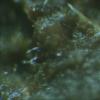
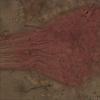
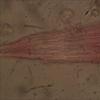
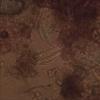
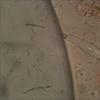
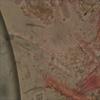
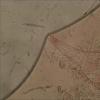
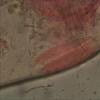
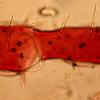
 Blackwell-amp-Malloch-Pyxidiophora-1989-0001.pdf
Blackwell-amp-Malloch-Pyxidiophora-1989-0001.pdf